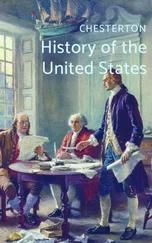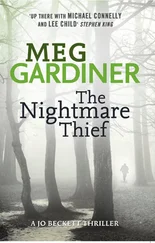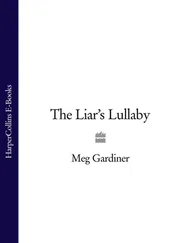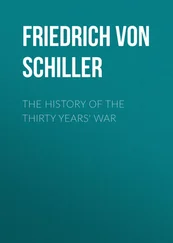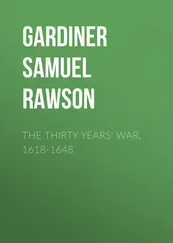Paisley Council, mindful that many families would not be able to afford the cost of burying their dead children, offered a free burial ground at Hawkhead Municipal Cemetery for those who could not afford a plot, and the town’s team of ten gravediggers was trebled to thirty. Tragically, some of this swollen workforce found themselves digging the final resting place of their own child.
Two days earlier, on 2 January, the Glen cinema manager Charles Dorward had been arrested and charged with culpable homicide. The charge hung on whether the metal trellis gate that had trapped so many of the dead had been padlocked rather than left unlocked during the performance, as it should have been according to health and safety regulations. Dorward was released on bail of £750, and hastily packed and left his home in the town where so many families had been touched by the disaster.
The case was heard before the Lord Advocate, Craigie Aitchison KC, in Edinburgh on 29 April 1930. During the proceedings it came out that on the morning of the fire the cinema had been inspected by members of the Paisley Fire Brigade, who had pronounced it safe. The Glen’s owner, James Graham, agreed that there were insufficient exits, and claimed that he had repeatedly reminded Dorward that under no circumstances were the gates to be shut during matinee performances. The manager replied that they were locked on occasions to stop children who hadn’t bought tickets from slipping in for free during the film. Graham replied that ‘he didn’t care if the whole of Paisley slipped in; the gates must be kept open’. A policeman gave evidence that when he arrived on the scene the gates were padlocked, but Dorward was adamant that he had opened them himself before the start of the matinee on 31 December 1929. The cinema chocolate girl, Isla Muir, confirmed that she had seen him open the gates. She was unable to say how they came to be closed subsequently, but suggested that two boys she had seen hanging about outside might have been responsible. After a trial lasting only two days, Charles Dorward was found not guilty by the unanimous verdict of the jury. It was concluded that although cigarette butts, spent matches and an empty cigarette box had been found in the projection room — where smoking was not permitted — these were not the cause of the film combusting: rather it was the carelessness of a fifteen-year-old assistant, James McVey, who had put a metal canister containing the first reel of nitrate on top of a battery, causing a short circuit, that was to blame, though once the film started to smoke, the limited number of exits, the shortage of attendants and the excessive number of children packed into the cinema that afternoon had all contributed materially to the tragedy.
Lessons were learned from the Glen cinema disaster. In the new decade many municipal authorities — Glasgow included — ordered an inspection of all theatres and cinemas under their jurisdiction. Licences were scrutinised and the fitness of those holding them checked, legislation was introduced to check the ‘tuppenny rush’ at children’s matinees, those under seven must be accompanied by an adult, there had to be a higher ratio of attendants to children, and the Cinematograph Act of 1909 was updated to extend local authorities’ powers to ensure that all cinemas had a greater number of exits, that doors opened outwards and were fitted with push bars, and that seating capacity was limited, among other safety stipulations.
There was no counselling offered to the traumatised survivors. They were advised to forget about the terrible experience, and in an effort to help this healing process Paisley Town Council offered injured children and bereaved parents a week at the seaside. Small parties left Paisley a fortnight after the tragedy for West Kilbride and Dunoon. The relief fund was closed: it had raised £5,300.
It was a welcome sum. Paisley was a poor town. Although men such as the thread manufacturers Peter and James Coats, who were both worth more than £2 million (around £100 million in today’s prices) when they died in 1913, had made their fortunes in Paisley, by 1929 the town was the victim of the industrial depression that swept the West of Scotland, the Valleys of Wales, and the manufacturing North and other pockets of England. Unemployment was high and rising, and wages were low for those in work in Paisley.
Yet even before the Glen cinema disaster brought the town unwanted publicity, Paisley’s name was known throughout the English-speaking world. It was synonymous with soft woollen shawls bearing distinctive teardrop or tadpole patterns (probably representing the growing shoot of the date palm), usually in muted, smudged colours that had been greatly prized since the East India Company had first brought such shawls, woven of goatsdown, from Kashmir in the eighteenth century. Desirable these might have been, but they were fabulously expensive, so around 1780 weavers in Norwich and Edinburgh began to produce shawls ‘in imitation of the Indian’, using a new technique that reduced the cost of production by three-quarters. Paisley had a workforce of skilled weavers, but its silk industry had been hit badly by the Napoleonic Continental blockade. It seized on this new fashion accessory, and by the 1840s was effectively a one-industry town, with a monopoly of such shawl production, with the so-called ‘big corks’ of Paisley buying the yarn and the designs and distributing them to cottage-industry handloom weavers. Shawl-making brought new prosperity to the town — though not to the weavers, who were now outworkers rather than creative artisans, and gradually, with the introduction of the Jacquard loom, factory hands. But since by definition fashion items are just that, there were slumps and booms throughout the nineteenth century, and by the twentieth coats and jackets had replaced shawls as outer wear. The weavers of Paisley persevered and adapted to making any new products that might sell, but by 1930 only vestiges remained of the weaving industry that had made the town’s name go around the world. In mid-nineteenth-century Scotland the textile industry had employed over 20 per cent of the population; by 1931 the figure was less than 7 per cent, and those who could find work found it in thread manufacture, starching and dyeing.
Those who couldn’t would take a train to nearby Glasgow, with a population in 1931 of over a million and still claiming to be the ‘second city of the Empire’. But Glasgow had also been hard hit, with a large proportion of its resources tied up in what would become irredeemably depressed heavy industries: shipbuilding on the Clyde, where one-fifth of the world’s tonnage of ships had been launched by the start of the First World War, coalmining in Lanarkshire, and jute and linen manufacture on Tayside. By 1930, while 16.1 per cent of the population of the United Kingdom was unemployed, in Scotland the figure was 18.5 per cent, and by 1933 it had soared to 26.1 per cent compared to the overall UK figure of 19.9 per cent. And for those in work, wages were low: less than 92 per cent of those earned in England. By 1931–32 that had fallen further, to 87 per cent. The thirties were always going to be a difficult decade for Paisley: now it had tragedy layered over hardship.
We have magneto trouble. How, then, can we start up again?
John Maynard Keynes, December 1930
‘It is difficult to see the wood for the trees,’ mused Gerald Barry, then editor of Lord Beaverbrook’s Saturday Review , though soon to resign on a question of principle and start the Week-End Review , and something of a connoisseur of English eccentricities and oddities, in a BBC broadcast on the final day of the 1920s. He rounded off his talk in much the same vein. ‘We cannot put the jigsaw puzzle of the present together, because we are sitting on the pieces.’ In between he surveyed the year that had passed, commenting on the progress of the R100 and the R101 airships, and on the ‘thirst for speed … one of the significant tendencies of our time’, which had been partially slaked by Sir Henry Segrave’s ‘remarkable motor-car record at Daytona Beach of 231 m.p.h.’, and on the extraordinary weather, which ‘began with extreme and prolonged cold which those of us with burst water pipes will not forget in a hurry … followed by a superb summer and a drought which caused many towns and villages great anxiety and stopped many of us watering our gardens and washing our cars’, and ending with ‘disastrous floods and record gales’. The number of motorists had continued to increase, and with them the number of accidents, as had what Barry called the ‘continued uglification of the countryside’. On the credit side Stonehenge, Friday Street, Runnymede and many more ‘notable spots’ had been saved, and in Barry’s mind the fierce controversies over Sir Gilbert Scott’s design for a new power station at Battersea, the erection of pylons across the South Downs as part of the new electrical grid system and proposals for the new Charing Cross Bridge were evidence that ‘in 1929 we have become more conscious of the need of beauty and orderliness in our midst’.
Читать дальше


